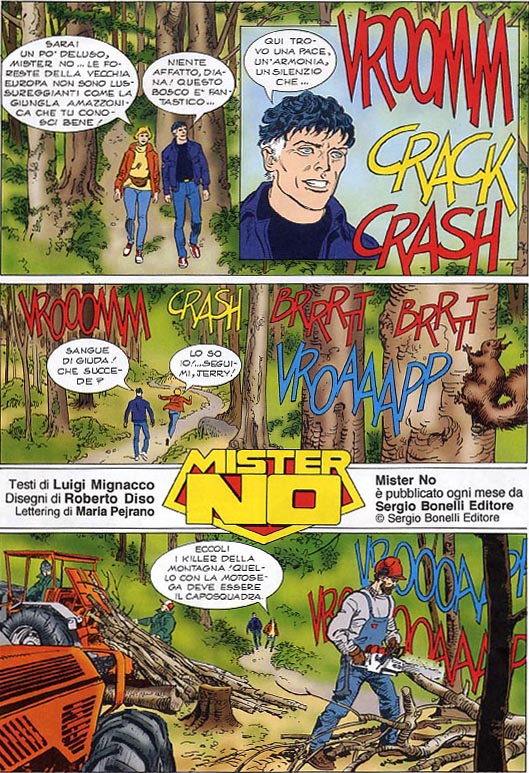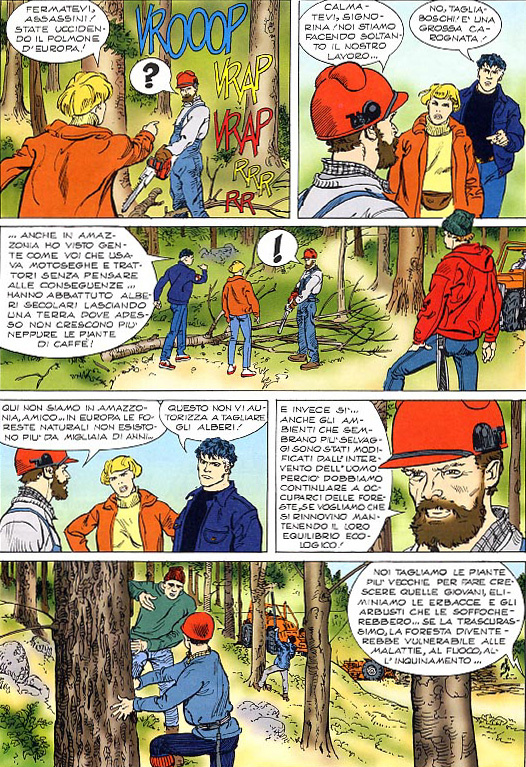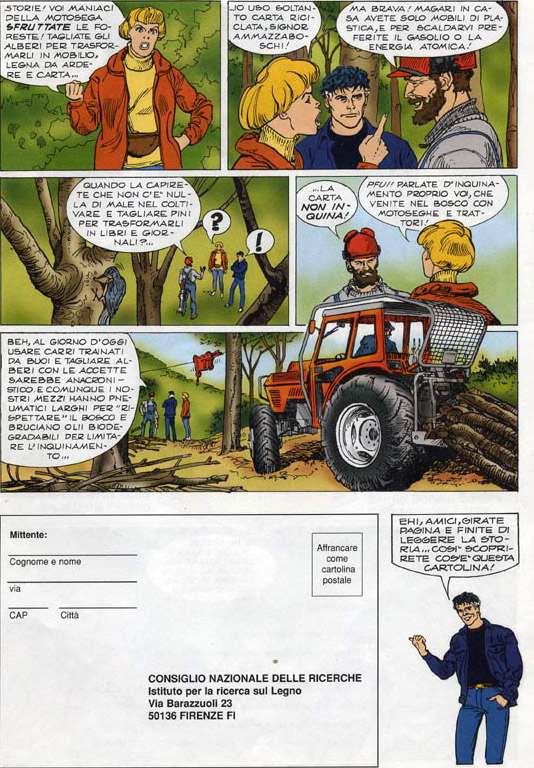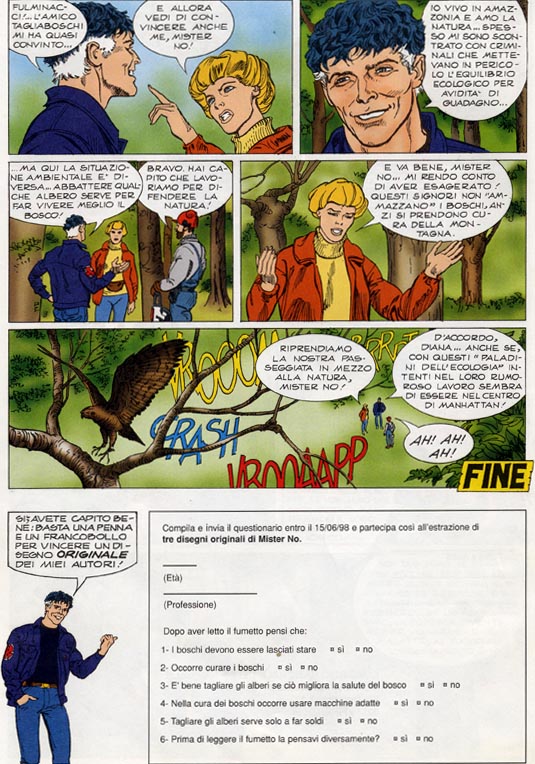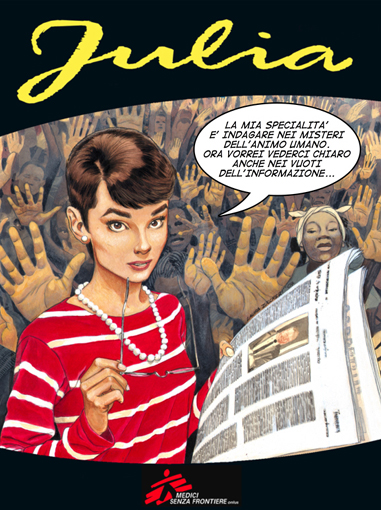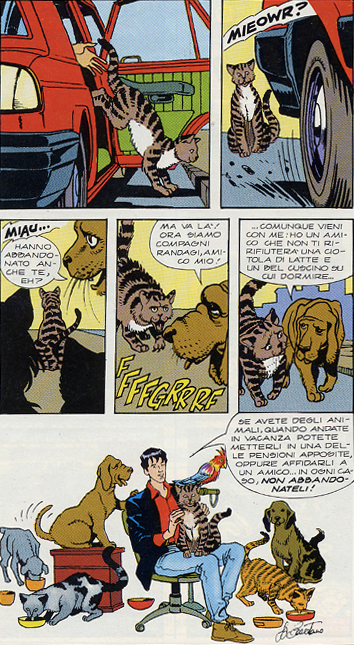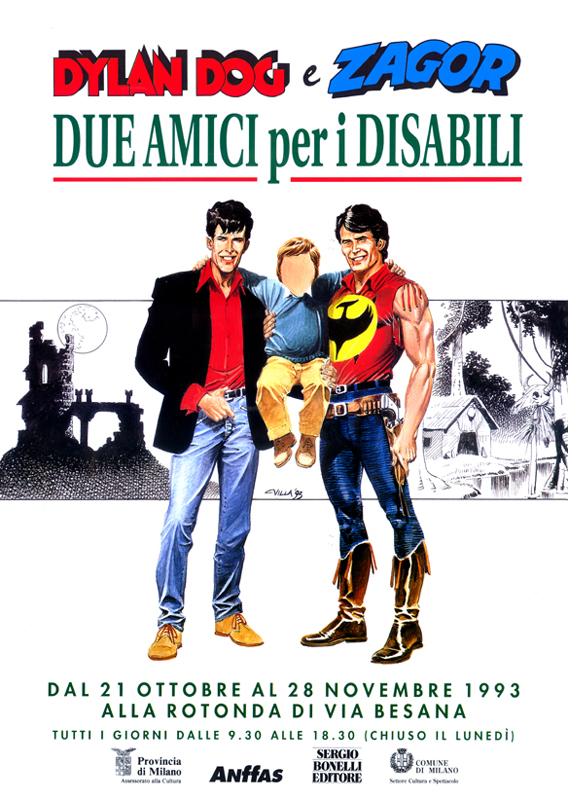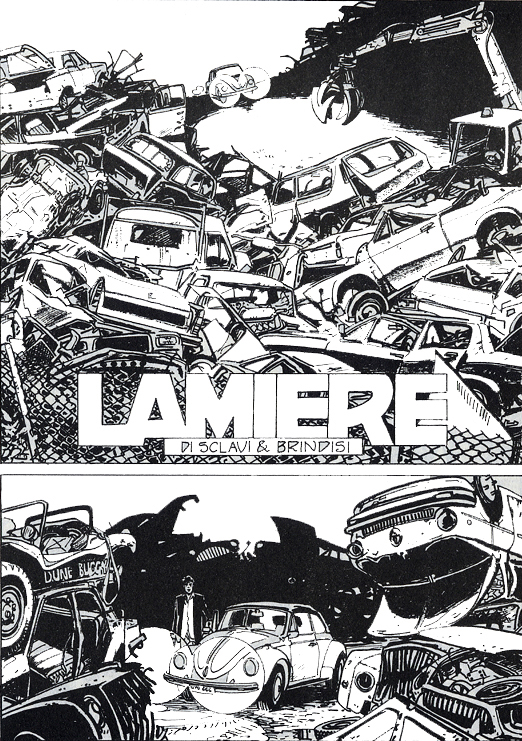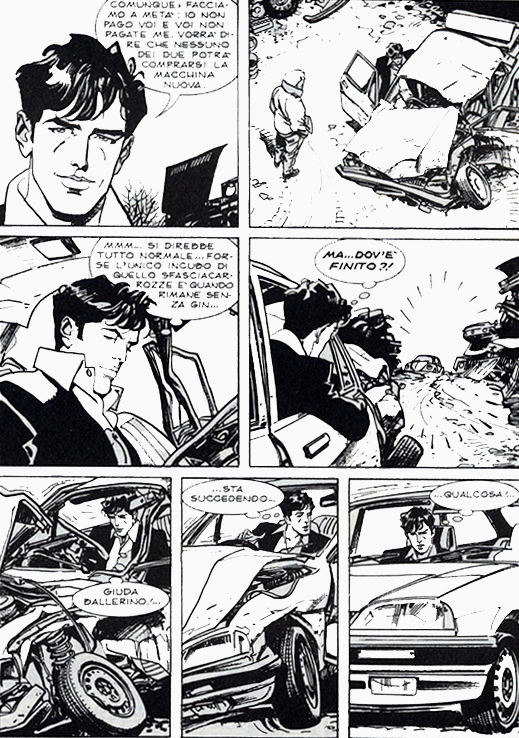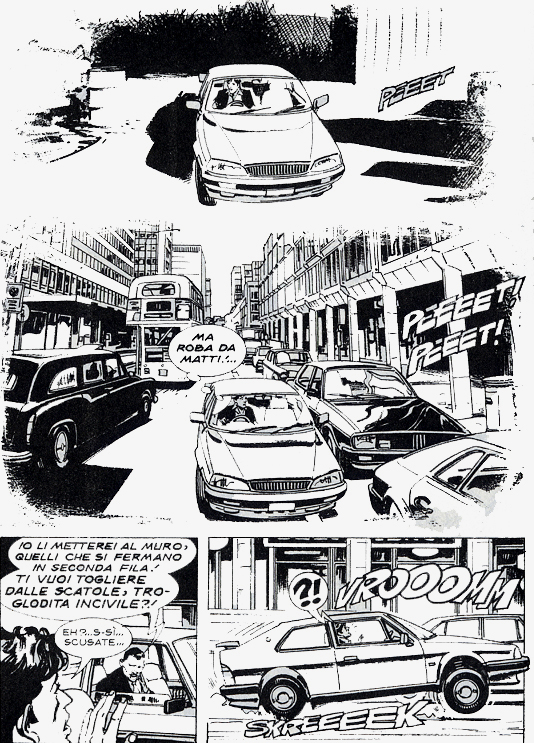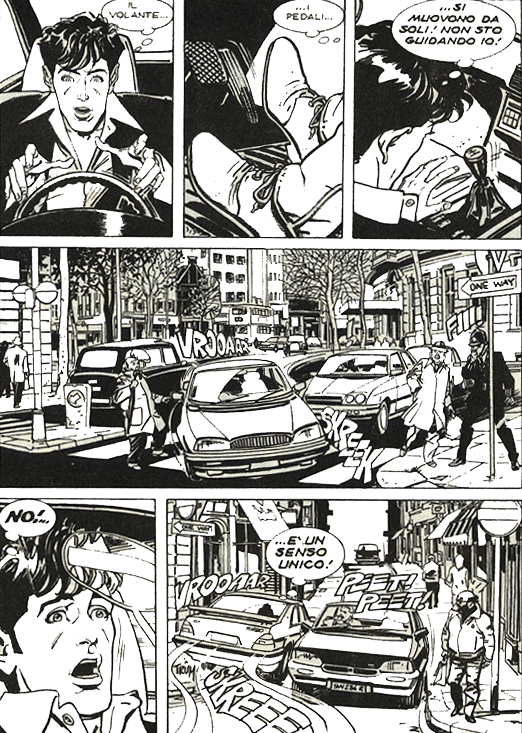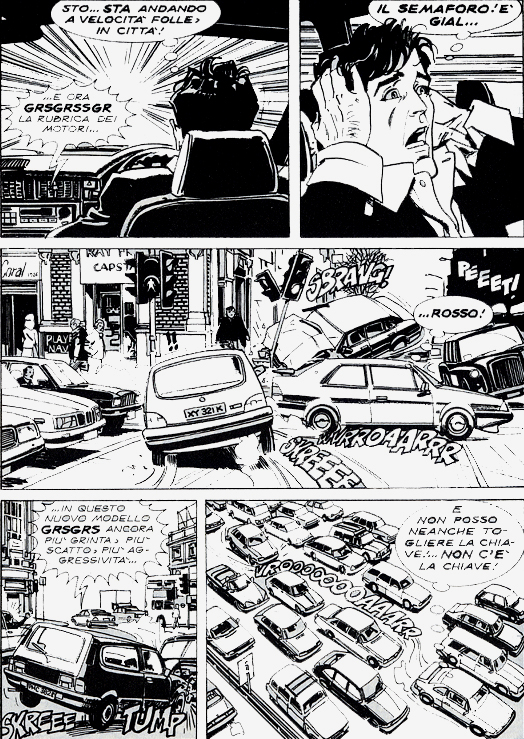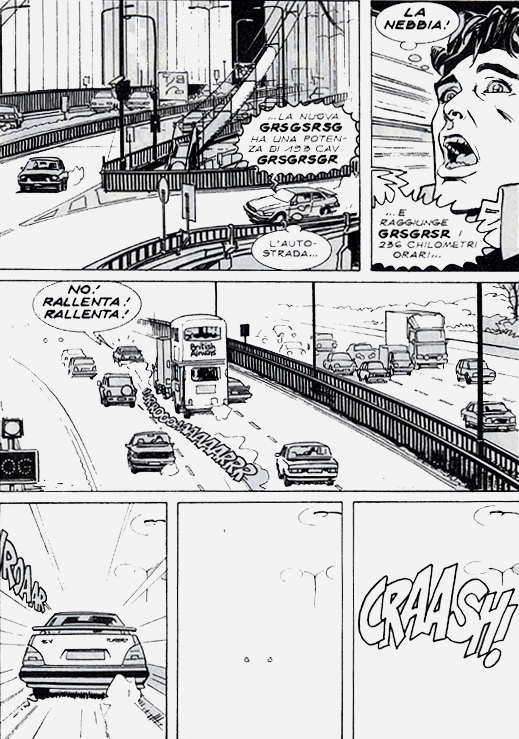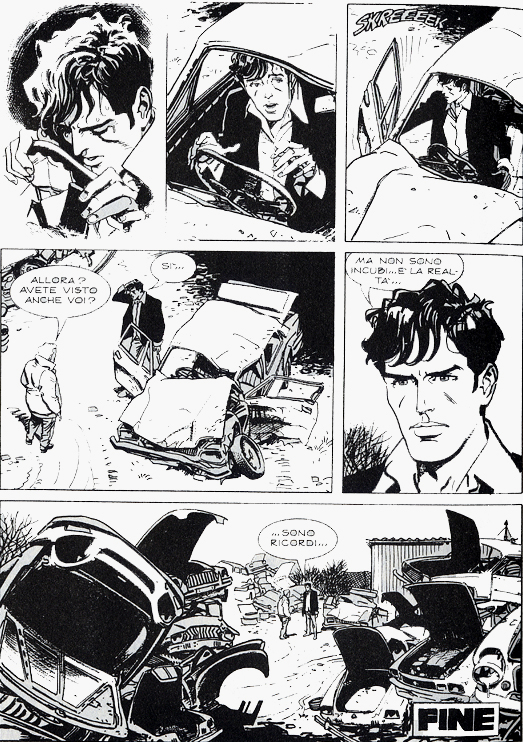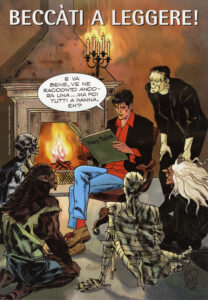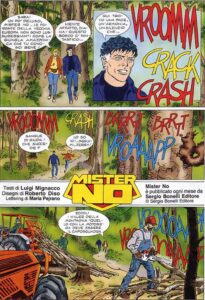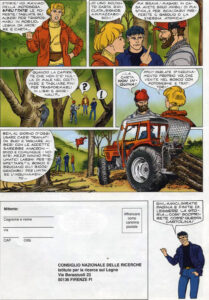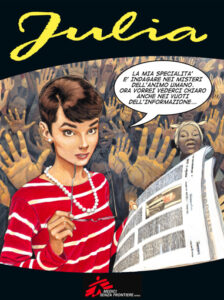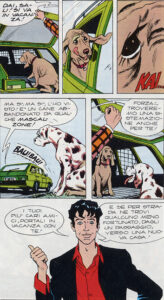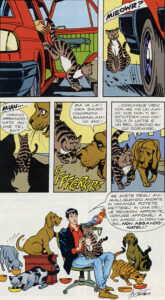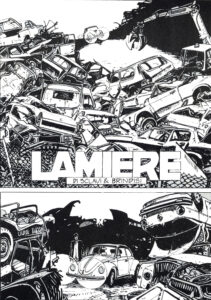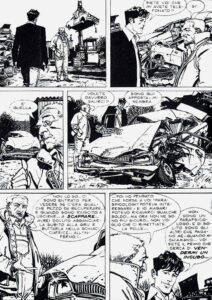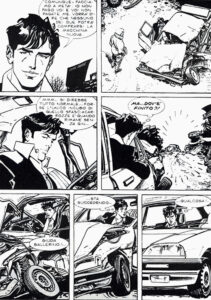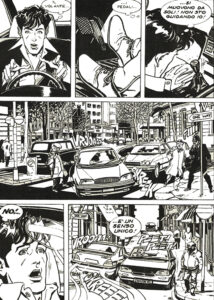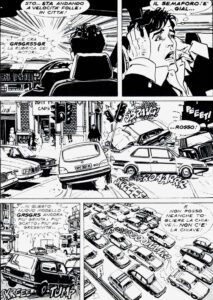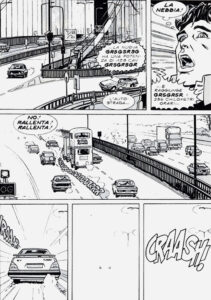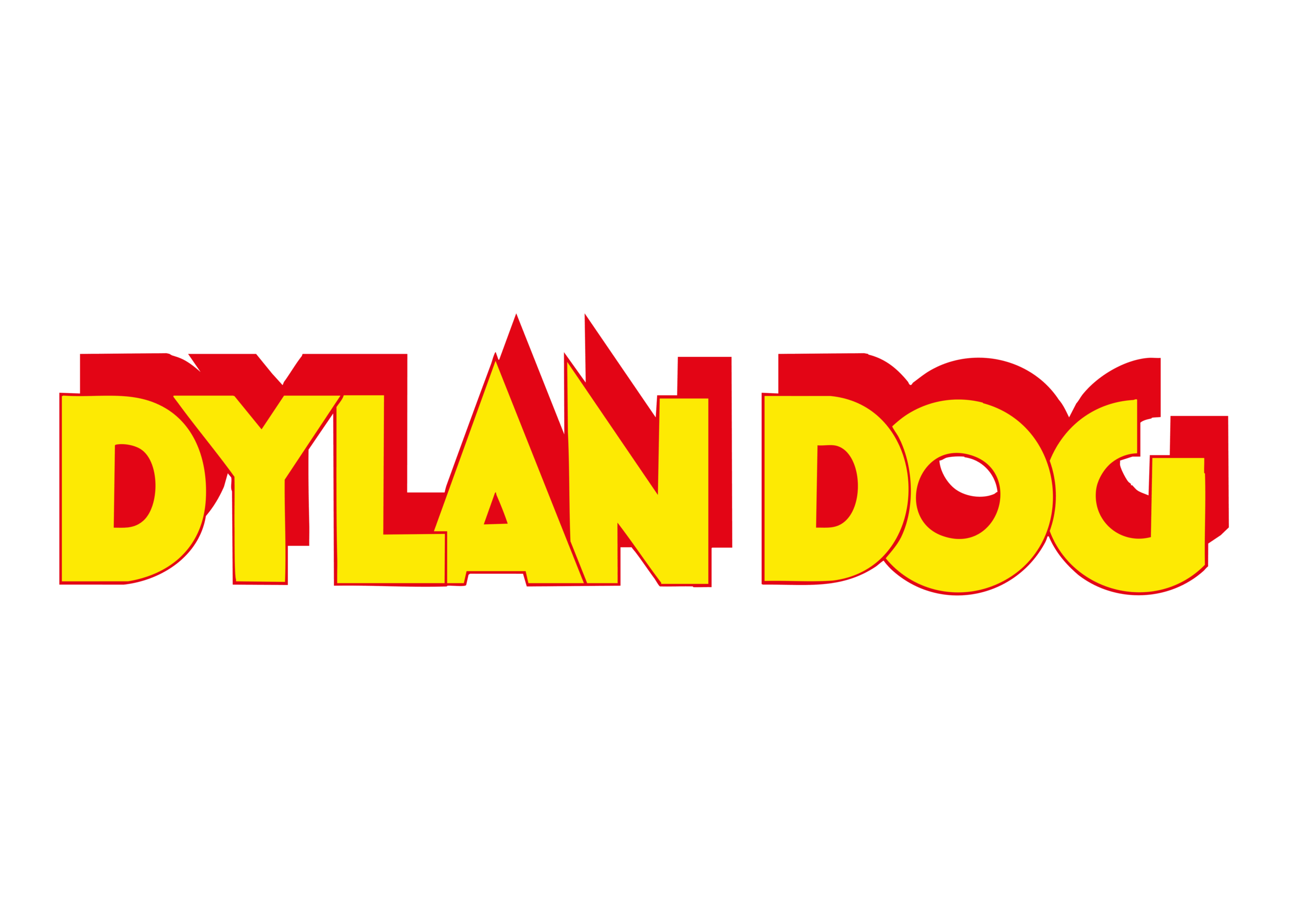It’s by no means surprising to find comics characters slipping out from the confined space of the bubbles that frame them and prompting us to reflect on particularly important aspects of life. Sometimes, they beckon to us “from inside” the stories that depict them as protagonists, as was eloquently highlighted by the exhibition “Cielo di Piombo – fumetti e satira contro l’inquinamento”
It was 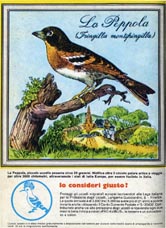 Tex who inaugurated the season of civil commitment of the Bonellian paper heroes, to promote a campaign to join LIPU, the Italian Bird Protection League (March 1976), and then, again for the same association, for the defense of migratory species (September 1976), that too often fall victim to poachers. After that, another twenty years or so passed before the trail opened up by Aquila della Notte was beaten by other characters from Via Buonarroti.
Tex who inaugurated the season of civil commitment of the Bonellian paper heroes, to promote a campaign to join LIPU, the Italian Bird Protection League (March 1976), and then, again for the same association, for the defense of migratory species (September 1976), that too often fall victim to poachers. After that, another twenty years or so passed before the trail opened up by Aquila della Notte was beaten by other characters from Via Buonarroti.
In 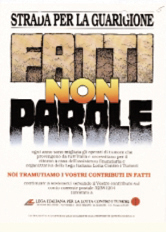 1992, Mister No lent his humorous figure to an extremely serious theme that had decidedly dramatic implications: cancer research, in support of a campaign of subscriptions to the Italian League for the fight against tumors. The second occasion that saw our one-time pilot of yankee fighter planes actively engaged in social themes was in connection with a less painful, although no less important issue, one that actually more closely mirrored the spirit of his adventures: the defense of forests and the environment.
1992, Mister No lent his humorous figure to an extremely serious theme that had decidedly dramatic implications: cancer research, in support of a campaign of subscriptions to the Italian League for the fight against tumors. The second occasion that saw our one-time pilot of yankee fighter planes actively engaged in social themes was in connection with a less painful, although no less important issue, one that actually more closely mirrored the spirit of his adventures: the defense of forests and the environment.
Thus in 1998 Jerry Drake was the protagonist of a short adventure written by Luigi Mignacco and illustrated by Roberto Diso, in the service of a campaign to promote awareness of the value of forest land organized by the Istituto per la Ricerca sul Legno. The adventure appeared as a supplement to the April number of “Airone”, and it was characterized by its capacity to show, in just a few pages, the complexity of the task of safeguarding the woodland heritage. In addition, it warned against intransigent positions that reflect stereotyped prejudices, which often, although spurred by the best of intentions, do not favor the expansion of a true and effective environmental conscience. In the mid 1980s the theme of the environment was once again championed by Mister No under the sign of Cigno Azzurro”, the emblem of an operation promoted by Legambiente concerning the waters of the Lake of Como, the Lake of Varese, Lake Garda and Lake Maggiore.
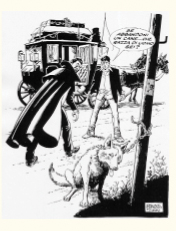 Another recurrent socially concerned appeal supported by the Bonellian publications, this time in agreement with the Lega Nazionale per la difesa del cane , involves the criminal habit cultivated by too many of our fellow citizens who seek to get rid of their pets during holiday periods, often after acquiring them with the same unthinking attitude with which one would purchase any random object in common use. Starting from July 1992 Sergio Bonelli’s Newsletter, the bulletin published as an appendix to the albums – not to mention the appeals contained in the various “mailbags” every year – has contained a one-plate mini-story with Dylan Dog as the protagonist, linked to the campaign “Anyone who abandons an animal is a monster”. The theme of these mini-stories reiterates in a more direct form what is certainly an issue very dear to Sclavi’s characters, shared by all the Bonellian heroes and constantly present in the unfolding structure of their adventures: respect for living creatures, especially when they are defenseless and blameless.
Another recurrent socially concerned appeal supported by the Bonellian publications, this time in agreement with the Lega Nazionale per la difesa del cane , involves the criminal habit cultivated by too many of our fellow citizens who seek to get rid of their pets during holiday periods, often after acquiring them with the same unthinking attitude with which one would purchase any random object in common use. Starting from July 1992 Sergio Bonelli’s Newsletter, the bulletin published as an appendix to the albums – not to mention the appeals contained in the various “mailbags” every year – has contained a one-plate mini-story with Dylan Dog as the protagonist, linked to the campaign “Anyone who abandons an animal is a monster”. The theme of these mini-stories reiterates in a more direct form what is certainly an issue very dear to Sclavi’s characters, shared by all the Bonellian heroes and constantly present in the unfolding structure of their adventures: respect for living creatures, especially when they are defenseless and blameless.
Another point worth noting is that a similar defense of the rights of our non human companions constitutes the leit-motiv of the album entitled “Goblin” 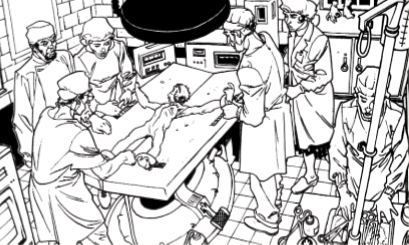 (1990, nr. 45 of the regular series), which weaves a melancholy tale of love and revenge around the disputed practice of vivisection. Dylan’s special sensitivity to the themes of suffering, marginalization and the all-enveloping fragility that can strike all of us has perhaps led him more often than the other Bonellian characters to be a frontrunner in campaigns of civil commitment. Thus in 1992 the Investigator of Nightmares was the protagonist of a number of awareness campaigns on the risks connected with drug addiction, organized by the municipalities of Milan and Florence and, in 1996, the municipality of Savona (“Droga out, la droga è il buio” and “Vivi la vita”); also, in tandem with Zagor he supported a project headed by the Associazione Nazionale Famiglie Fanciulli Subnormali [National Association of Families and Subnormal Children and Adults]: “Dylan Dog e Zagor, due amici per i disabili” [Dylan Dog and Zagor, two friends for the disabled], which from the point of view of its theme was strongly linked to the album <”Johnny Freak”> (nr. 81 of the series), published in 1993. In the same year, the mailbag of Dylan Dog (second reprinting of nr. 45) hosted an appeal in favor of Greenpeace, with an illustration by Bruno Brindisi created specially for the occasion.
(1990, nr. 45 of the regular series), which weaves a melancholy tale of love and revenge around the disputed practice of vivisection. Dylan’s special sensitivity to the themes of suffering, marginalization and the all-enveloping fragility that can strike all of us has perhaps led him more often than the other Bonellian characters to be a frontrunner in campaigns of civil commitment. Thus in 1992 the Investigator of Nightmares was the protagonist of a number of awareness campaigns on the risks connected with drug addiction, organized by the municipalities of Milan and Florence and, in 1996, the municipality of Savona (“Droga out, la droga è il buio” and “Vivi la vita”); also, in tandem with Zagor he supported a project headed by the Associazione Nazionale Famiglie Fanciulli Subnormali [National Association of Families and Subnormal Children and Adults]: “Dylan Dog e Zagor, due amici per i disabili” [Dylan Dog and Zagor, two friends for the disabled], which from the point of view of its theme was strongly linked to the album <”Johnny Freak”> (nr. 81 of the series), published in 1993. In the same year, the mailbag of Dylan Dog (second reprinting of nr. 45) hosted an appeal in favor of Greenpeace, with an illustration by Bruno Brindisi created specially for the occasion.
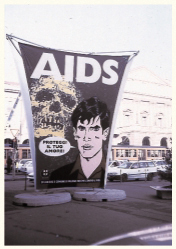 |
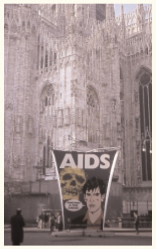 |
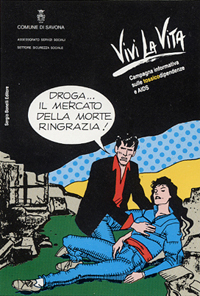 |
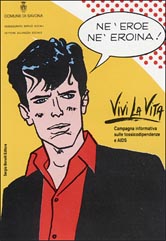 |
 Continuing with this attention to highly sensitive themes, stressed again in 1995 by hosting on the back cover an appeal from LILA, the Italian League for the Fight against Aids (but the question had already been addressed in number 88 “Oltre la morte” and would subsequently be taken up again in 1988 during an awareness campaign organized by the Municipality of Milan), 1996 saw Dylan Dog “at the wheel” of a road safety campaign (sponsored by the Council of Ministers) entrusted to a brief story by Tiziano Sclavi and Bruno Brindisi, with the eloquent title of “Lamiere”, originally published in the weekly “Auto Oggi”.
Continuing with this attention to highly sensitive themes, stressed again in 1995 by hosting on the back cover an appeal from LILA, the Italian League for the Fight against Aids (but the question had already been addressed in number 88 “Oltre la morte” and would subsequently be taken up again in 1988 during an awareness campaign organized by the Municipality of Milan), 1996 saw Dylan Dog “at the wheel” of a road safety campaign (sponsored by the Council of Ministers) entrusted to a brief story by Tiziano Sclavi and Bruno Brindisi, with the eloquent title of “Lamiere”, originally published in the weekly “Auto Oggi”.
Again in 1996, our nightmare-repeller appeared prominently on the cover of “Scarp de’ Tennis” , the flysheet of the homeless and down-and-outs of Milan, taking part in an ideal solidarity march. Then in 1997, on the occasion of the great Mayday celebrations, in San Giovanni Square in Rome, the unmistakable figure of Dylan, clarinet in hand, became the godfather of the traditional music-cum-workers celebration. 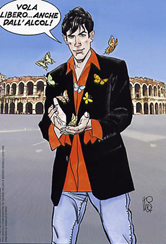 But there’s also another event that saw Dylan as the protagonist, and the most important thing is that he was picked as an authoritative and significant buddy and travelmate (you see, a paper friend is not just an imaginary friend!) by the kids of the Istituto Educativo Assistenziale “S. Giuseppe” of Castelverde (Cremona).
But there’s also another event that saw Dylan as the protagonist, and the most important thing is that he was picked as an authoritative and significant buddy and travelmate (you see, a paper friend is not just an imaginary friend!) by the kids of the Istituto Educativo Assistenziale “S. Giuseppe” of Castelverde (Cremona).
To celebrate the centenary of the foundation of the Charitable Religious Institution “SS. Redentore” to which the “S. Giuseppe” Institute belongs, the young patients created a film centering on a classic “Dylanated” adventure, which they entirely scripted, acted and shot by themselves, setting aside for a while the cumbersome presence of their handicap – demonstrating, in fact, to so-called “normal” persons that a physical and mental handicap is not (and must not be!) an obstacle to the growth of individual sensitivity. Their project was a shining confirmation that the capacity to develop personal sensitivity is not cancelled by disability, yet all too often we “normal folk” tend to regard it as the exclusive property of those who are lucky enough to be unaware of what it means to live a life of distress and suffering.
Just how much passion and rigor went into the production of the short film ““Dylan Dog e la donna che visse due volte” is eloquently testified by the time gap between the project start-up (an enormously long preparation phase, with careful research into the settings, reconstruction of the scenographic aspects, “philological” attention to the narrative characteristics of the series) in 1996, and the conclusion of the montage, which was not completed until 2000. And another very recent (2002) Bonellian appeal, in favor of the “Mauro Emolo” association which engages in fund-raising for research on the severe degenerative disease that affects brain cells, Huntington’s Chorea, is mentioned in the “Comics News” on our website and the mailbag of Dylan Dog nr. 193, “L’eterna illusione”. For Zagor, the opportunity to move center stage and once again train the spotlights on social commitment comes from the publication of the collective work “Il cielo in una stanza”, by the Gemini Editoriale press, which aims to raise funds for the purchase of equipment by the “Giannina Gaslini” hospital of Genoa. The book, in which a number of Sergio Bonelli Editore illustrators have taken part, is a richly colored tribute (and much more: it’s a amusing friend and companion as you travel through life) created with the littlest patients in mind, confined as they are to a hospital bed, facing a stay that is often hard and never-ending.
A 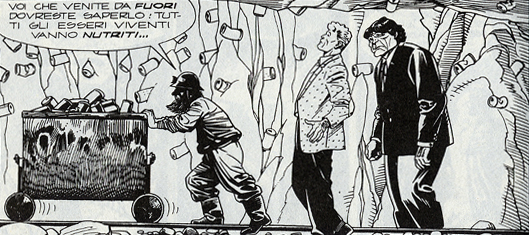 special word needs to be said about another historic occupant of Buonarroti Street, namely the distinguished professor, writer, archaeologist and incurably inquisitive searcher Martin Jacques Mystère. In actual fact, precisely on account of the above listed characteristics, GOUM has made himself available more for culturally oriented projects than for strictly social or environmental issues, except in one case that we wil now describe. “Miniere e lattine” (Alfredo Castelli-Lucio Filippucci, 1995) is a brief story created for the Dipartimento Scuola Ambiente of the Municipality of Milan, which aims to draw the attention of the younger generation to the twofold pathway of natural resources: first they are transformed into objects for use in various aspects of life, and then, once again through the work of man, they can be converted back into resources – no longer natural (obviously!) but no less useful.
special word needs to be said about another historic occupant of Buonarroti Street, namely the distinguished professor, writer, archaeologist and incurably inquisitive searcher Martin Jacques Mystère. In actual fact, precisely on account of the above listed characteristics, GOUM has made himself available more for culturally oriented projects than for strictly social or environmental issues, except in one case that we wil now describe. “Miniere e lattine” (Alfredo Castelli-Lucio Filippucci, 1995) is a brief story created for the Dipartimento Scuola Ambiente of the Municipality of Milan, which aims to draw the attention of the younger generation to the twofold pathway of natural resources: first they are transformed into objects for use in various aspects of life, and then, once again through the work of man, they can be converted back into resources – no longer natural (obviously!) but no less useful.
In 2007, it is Julia‘s turn to be picked up by Medici Senza Frontiere as a testimonial for a social campaign. MSF is an international privately funded organization, created to offer medical aid to endangered populations and to witness and testify against the violations of human rights highlighted during it missions. The evaluation of this organization is that italian mass media focus too little on the problems that afflict the most unfortunate inhabitants of our planet. Therefore a social campaign titled “Dimmi Di Più”

